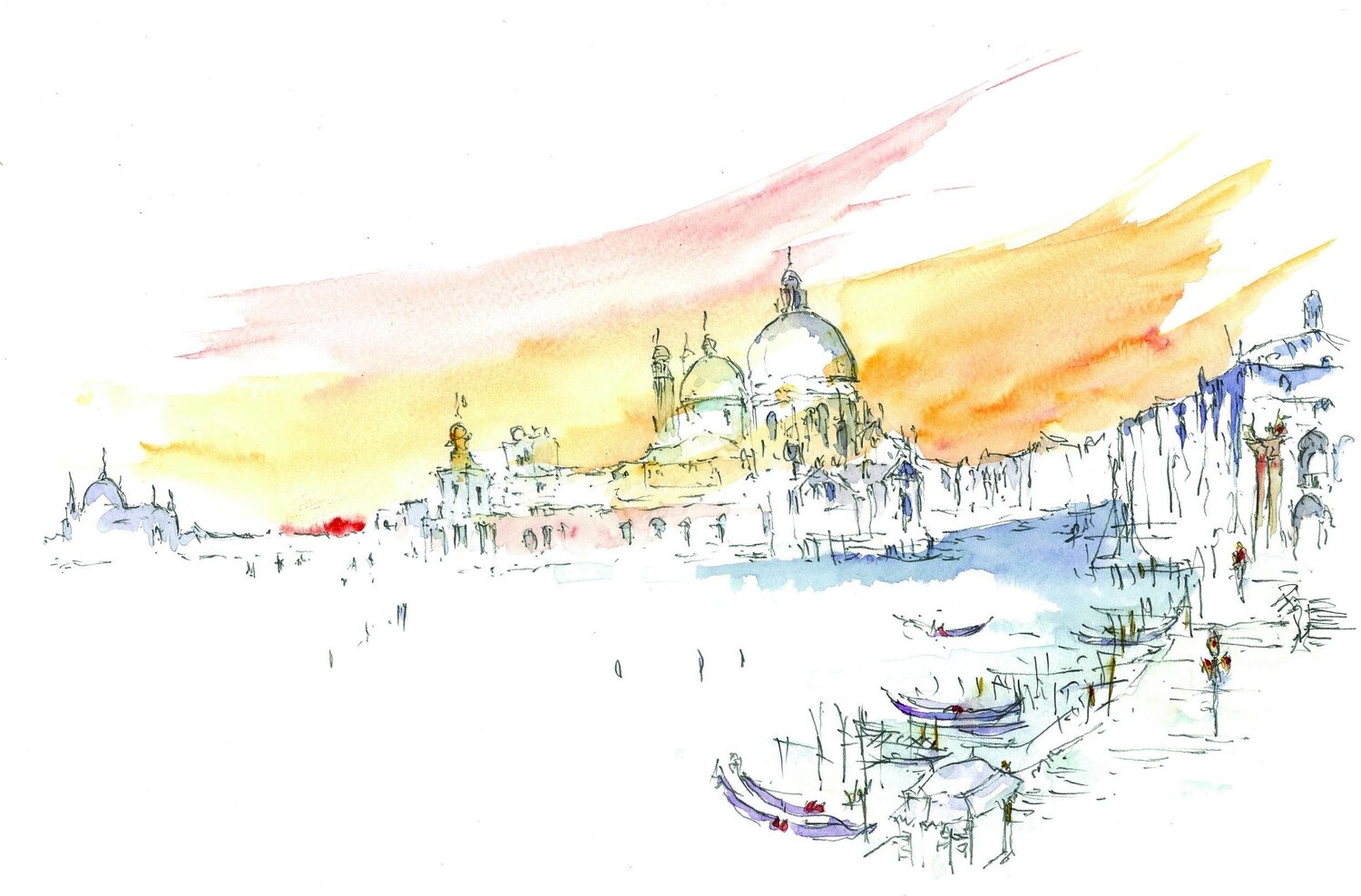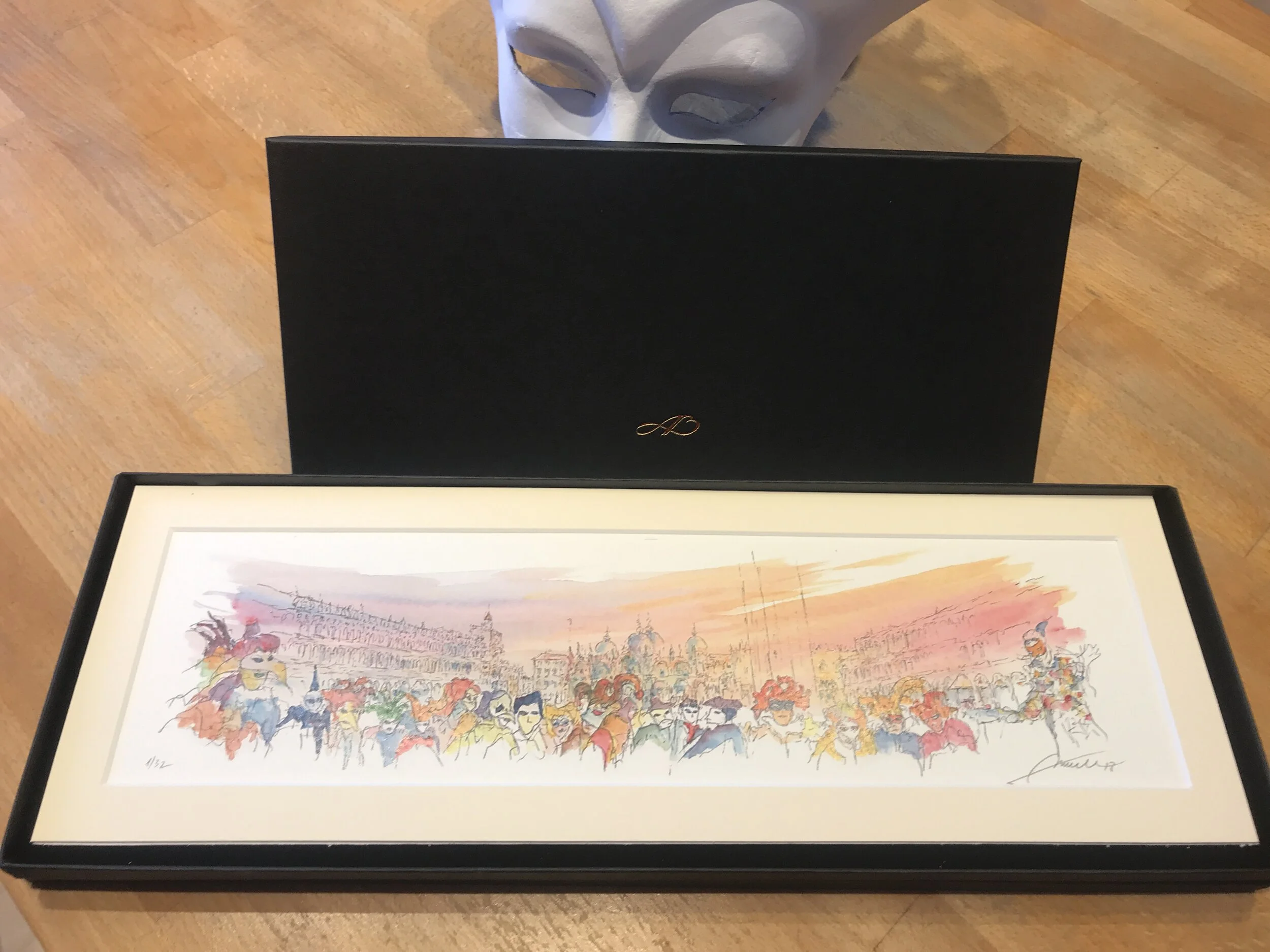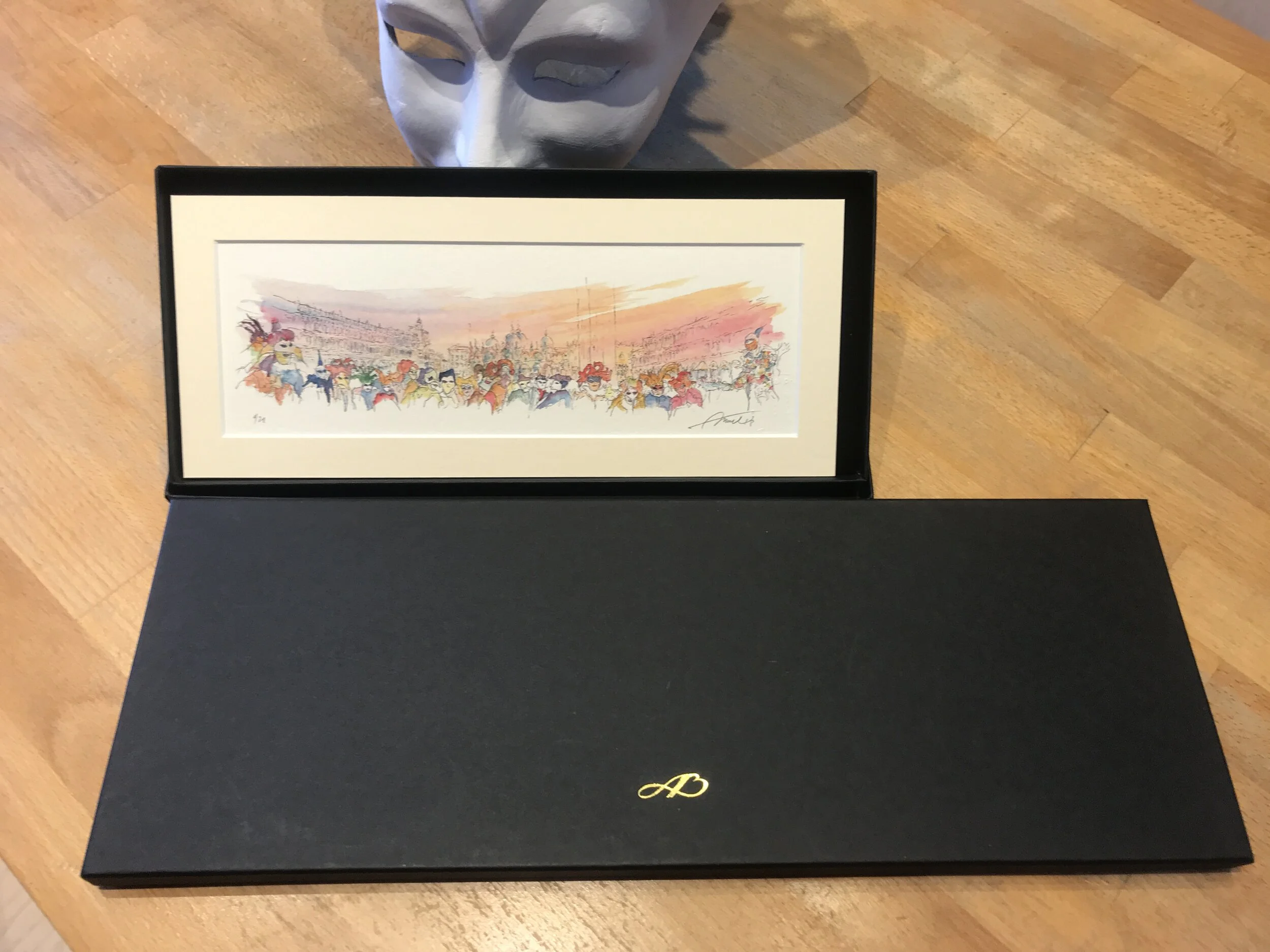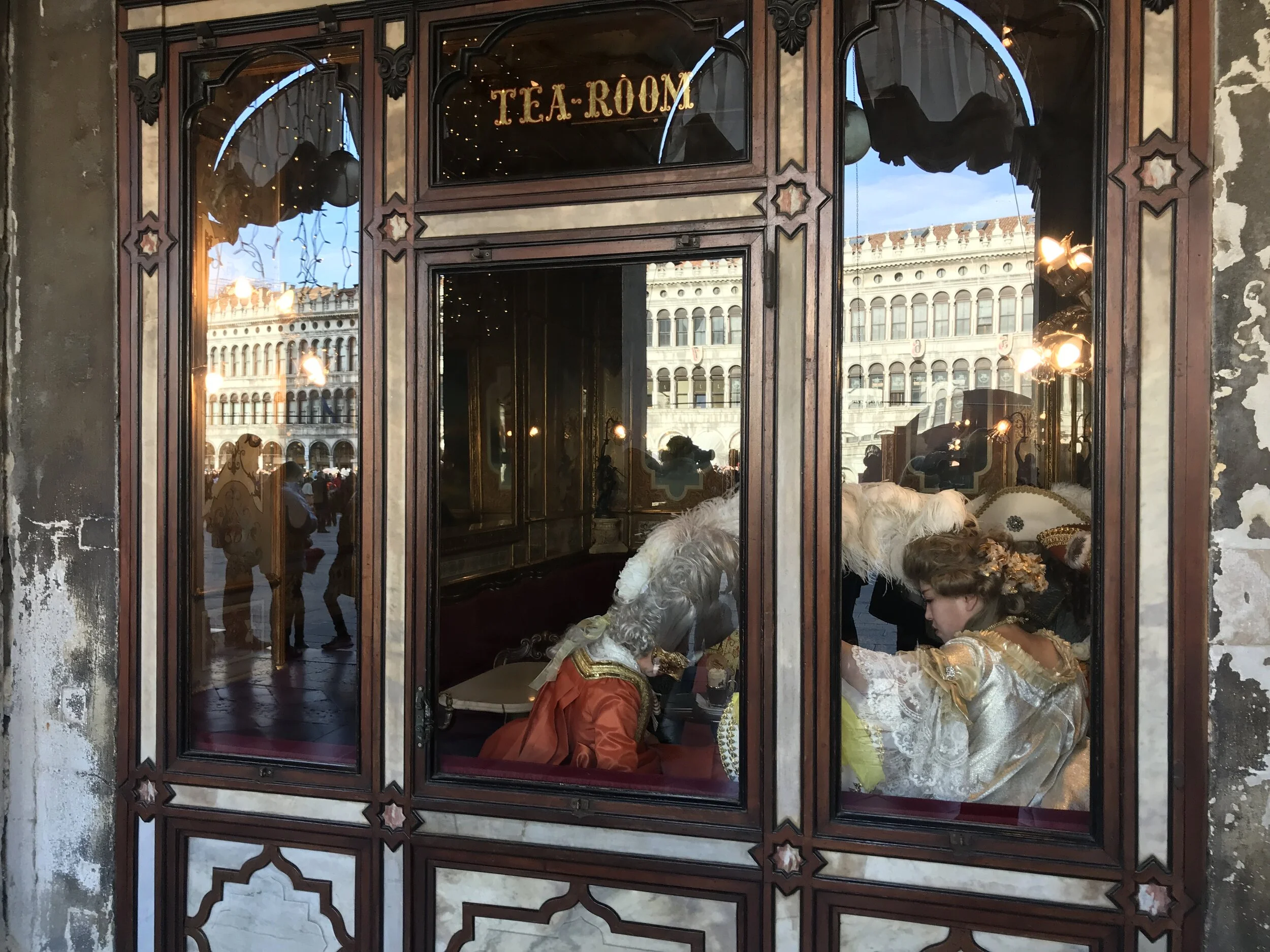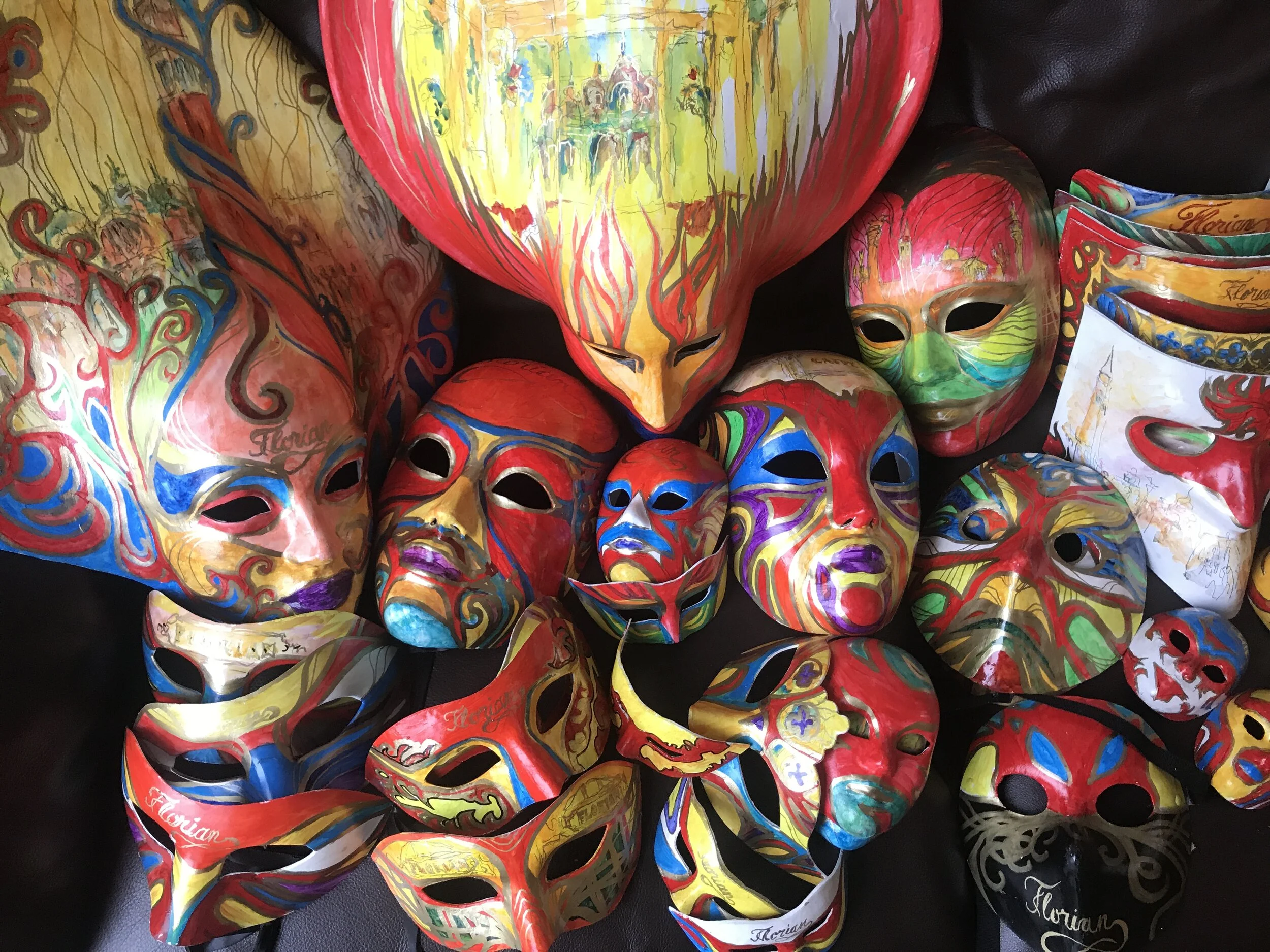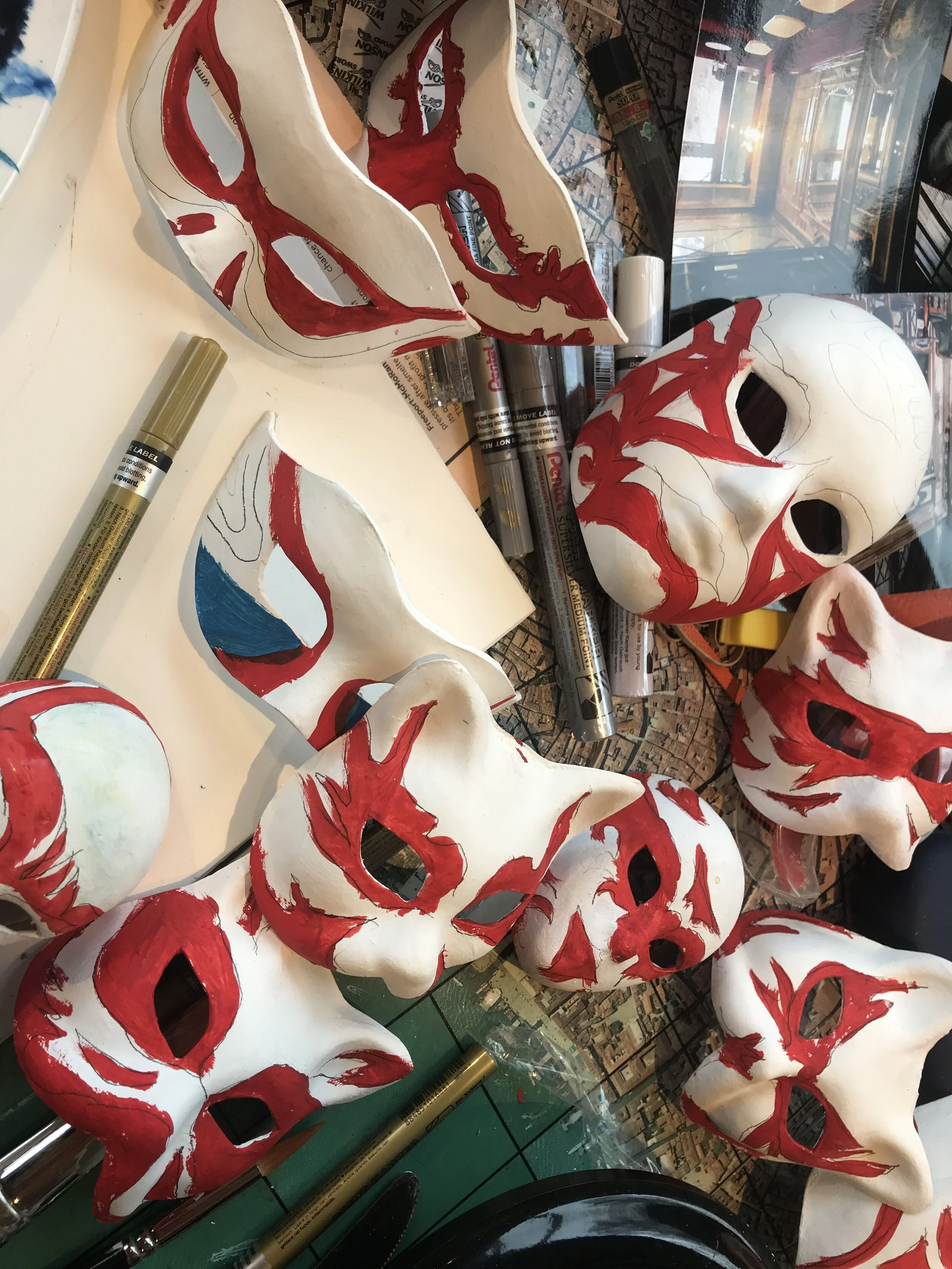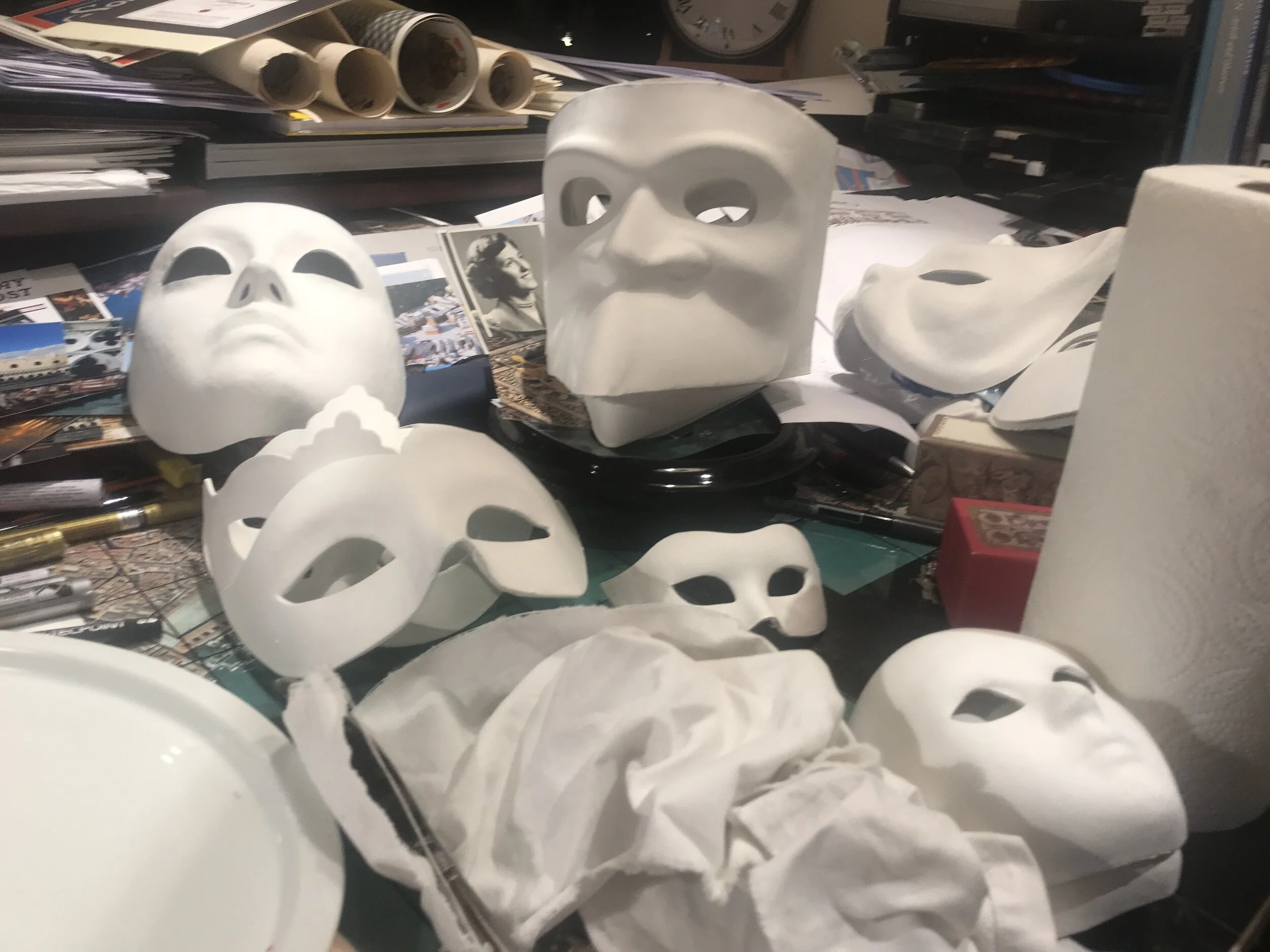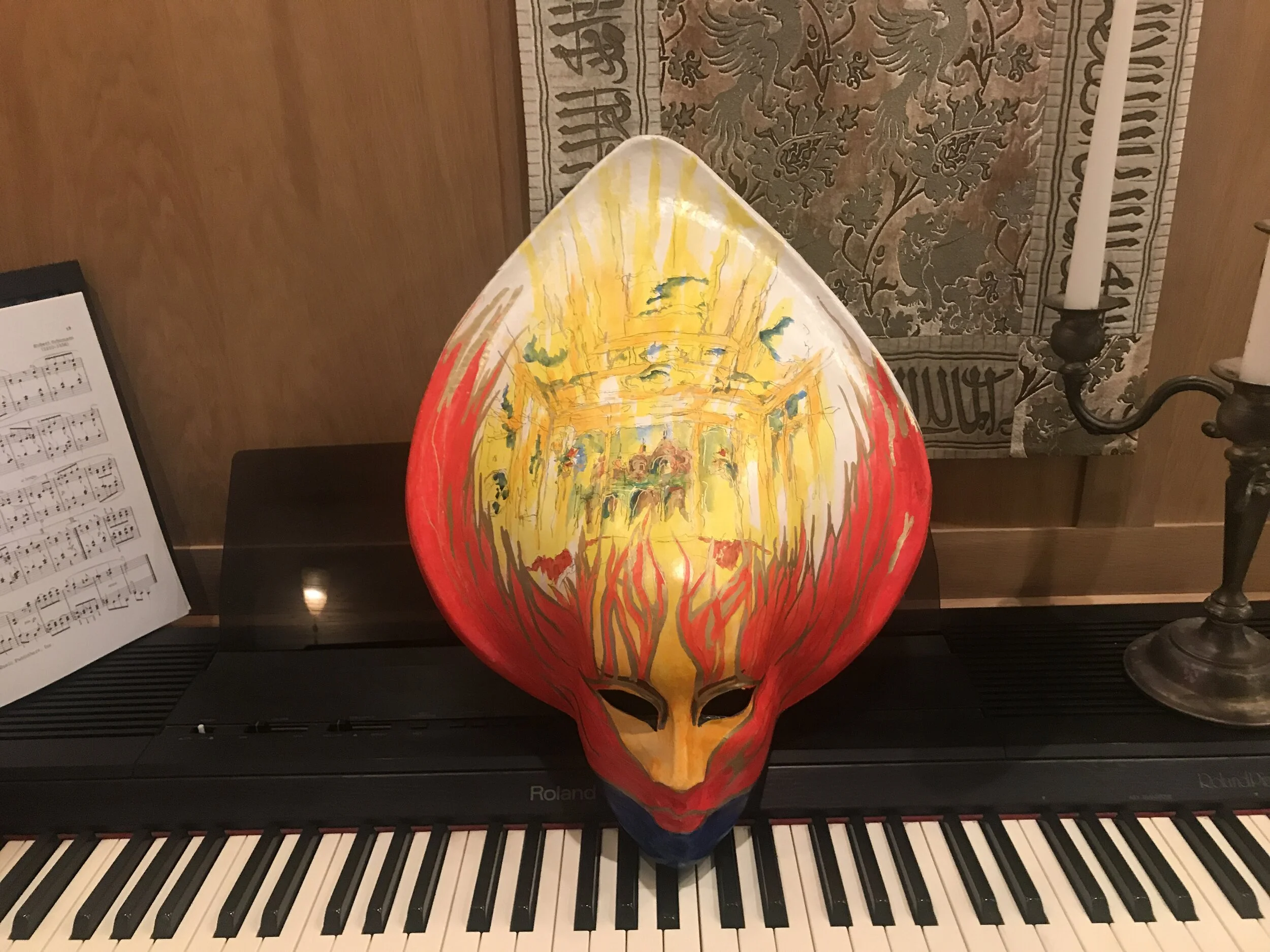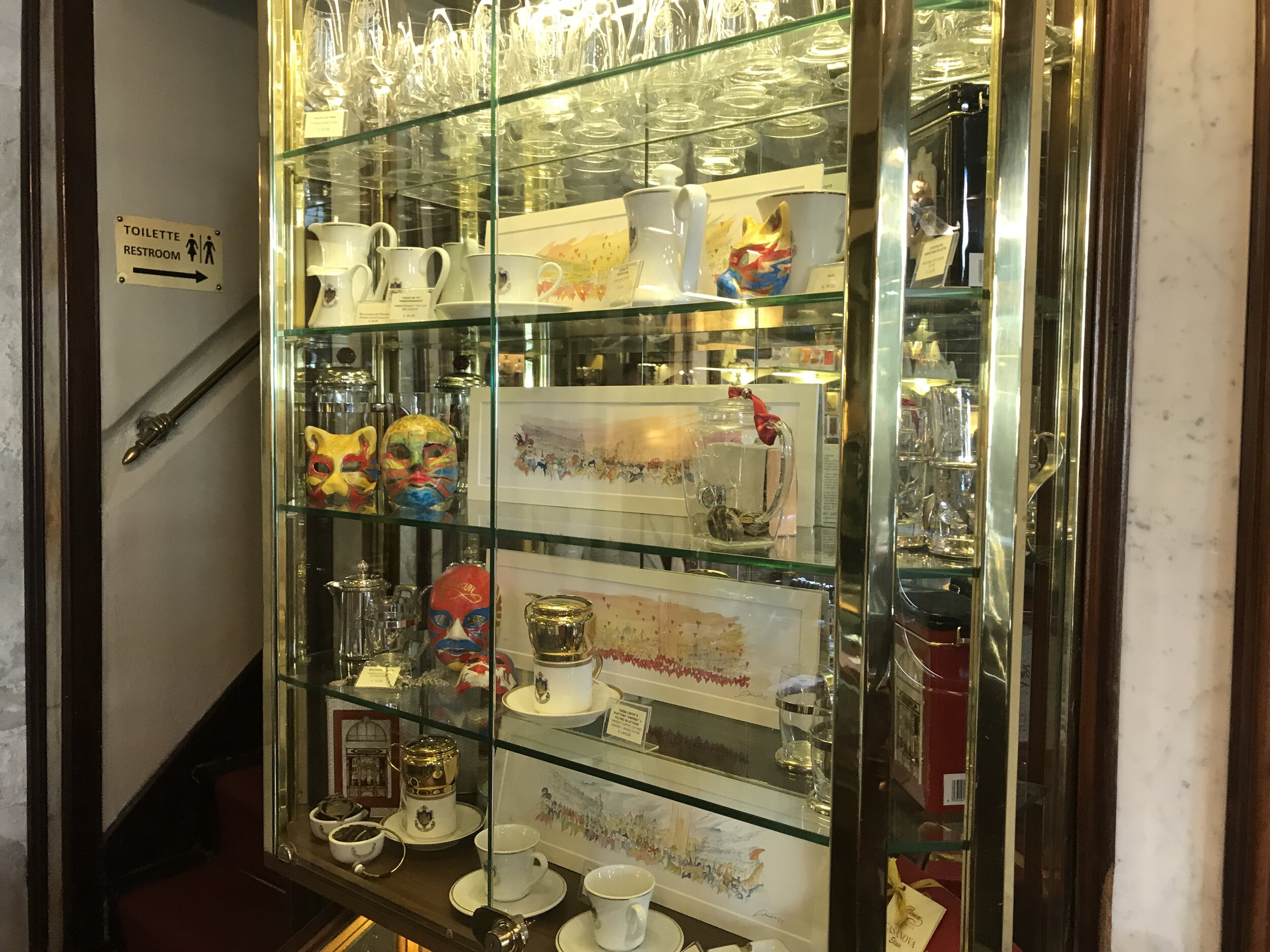CARNEVALE VENICE PRINTS
CARNEVALE VENICE PRINTS
A celebration of CARNEVALE- the original of this print and a series of masks were created for Adrian Tuchel’s 2018 exhibition in the unique Caffé Florian, Venice.
All of the pieces are hand signed and numbered by Adrian Tuchel and are
supplied with a Certificate of Authenticity signed by the artist.
The numbers on the print denote the individual piece number in the edition
over the total edition size. (i.e. 9/25). This is a limited edition of 2 different sized prints.
The first size 43 x 15 cm in a 28 pieces limited edition. The second size 31 x 13.5 cm in a 32 pieces limited edition.
The printing facility we work with has well over 35 years of experience in fine art printing and art publishing.
The printing is accomplished using 170g acid-free quality paper, pigment-based
inks and a four colour process printer ensuring high quality.
The first 3 test prints of all series remain in our archive. The print is presented mounted or in a special gift box with the additional of a mini easel if requested.
A special Carnevale celebration gift delivered to your door.
We ship all over the world. Please select the type of mailing and let us have
the destination address. All deliveries are 'signed for'.
Carnevale di Venezia (Venice Carnival) is undoubtedly one of the most famous carnivals in the world. The beautiful costumes and typical Venetian masks transform the city in a magical way. The glamour of it all will make you wish you lived in a different time period. The event usually attracts approximately 3 million visitors per year, which makes it the largest event in Venice. According to legend, the Carnival of Venice started following the military victory of the Venetian Republic over the Patriarch of Aquileia, Ulrico di Treven in the year 1162.
In the honour of this victory, the people started to dance and gather in San Marco Square. Apparently, this festival started in that time and became official in the Renaissance.
In the seventeenth century, the baroque carnival was a way to save the prestigious image of Venice in the world. It was very famous during the eighteenth century.
It encouraged licence and pleasure, but it was also used to protect Venetians from present and future anguish. Under the rule of the Holy Roman Emperor and later Emperor of Austria, Francis II the festival was outlawed entirely in 1797 and the use of masks became strictly forbidden. It reappeared gradually in the nineteenth century, but only for short periods and above all for private feasts, where it became an occasion for artistic creations.
Masks have always been an important feature of the Venetian carnival. Traditionally people were allowed to wear them between the festival of Santo Stefano (St. Stephen's Day, December 26) and the end of the carnival season at midnight of Shrove Tuesday (movable, but during February or early March). As masks were also allowed on Ascension day and from October 5 to Christmas, people could spend a large portion of the year in disguise.
Maskmakers (mascherari) enjoyed a special position in society, with their own laws and their own guild, with their own statute dated 10 April 1436.
Mascherari belonged to the fringe of painters and were helped in their task by sign-painters who drew faces onto plaster in a range of different shapes. Venetian masks can be made of leather, porcelain or using the original glass technique.
The original masks were rather simple in design, decoration, and often had a symbolic and practical function. Nowadays, most Italian masks are made with the application of gesso and gold leaf and are hand-painted using natural feathers and gems to decorate. However, this makes them rather expensive when compared to the widespread, low-quality masks produced mainly by American factories. This competition accelerates the decline of this historical craftsmanship peculiar to the city of Venice.
Several distinct styles of mask are worn in the Venice Carnival, some with identifying names. People with different occupations wore different masks.
Every year, the so-called Flight of the Angel marks the official opening of Venice Carnival. The event has its roots in the mid-16th century, when a young Turkish acrobat was able to reach, using only a barbell, the bell tower of San Marco’s Campanile walking on a rope tied to a boat anchored in the pier of the Piazzetta, adjacent to St. Mark’s Square. During the descent, the young acrobat reached the balcony of Palazzo Ducale, to pay homage to the Doge.
Immediately dubbed ‘Svolo del Turco,’ the spectacular feat was repeated every year since then, with variations, usually on ‘Fat Thursday’ (the Thursday before Ash Wednesday – the start of Lent). Initially, it was just performed by professional tightrope performers; later, a few young Venetians decided to take on the challenge.
Eventually, the men were provided with wings and hung to the rope through rings, then pushed down at high speed along the rope; the performance took the name of Flight of the Angel. At the end of the descent in the Palazzo Ducale gallery, the performer received gifts or money from the Doge himself.
In 1759, however, the show ended in tragedy when an acrobat crashed to the ground. Thus, it was decided to substitute people with a large wooden dove that, during the flight, would be scattering flowers and confetti on the crowd below. The event was renamed once again, and it became the Flight of the Colombina (little dove).
Nowadays, the ritual takes place at midday on the first Sunday of the festival, as one of the opening events that officially declares the start of the Carnival. Until 2001, a mechanical bird in the form of a dove descended on the festive crowd. Since 2001, the Flight of the Angel was reinstated. At first, women from the world of entertainment were chosen to descend from the bell tower; since 2011, a young Venetian woman awarded who is awarded the title of ‘Mary of the Carnival’ the year before, performs the flight.
